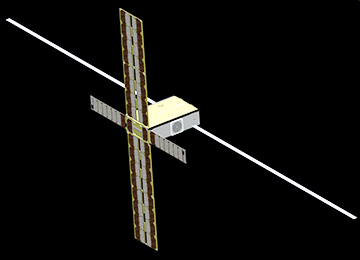
A plan of action has been established between GomSpace and ESA have signed a contract to develop a 6U nanosatellite, named Juventas to join the HERA mission. The Juventas nanosatellite will perform scientific tasks and eventual land on the Didymoon asteroid. The contract value is 400.000 euros.
In close orbit around Didymoon, Juventas will measure the gravity field as well as the internal structure of the asteroid. In collaboration with HERA, Juventas will perform satellite-to-satellite radio-science experiments and carry out low-frequency radar survey of the asteroid interior. This will be finalized with a landing using the dynamics of any likely bouncing impact events to capture details of the astroid’s surface material properties.
The nanosatellite will be a so called 6U nanosatellite approximately the size of a shoebox and mass of approximately 12 kilograms. It will be part of ESA’s HERA mission to a binary asteroid system, which is the first of its kind in Europe. Juventas will be the very first nanosatellite developed for deep space missions by GomSpace.

Artistic rendition of Juventas, the 6U cubesat developed as a 'daughter' to the Hera mothership. Image is courtesy of GomSpace.
GomSpace is the project prime and will be responsible for delivering the spacecraft and the mission design. Collaborators include GMV Innovating Solutions from Romania leading the guidance, navigation and control subsystem, and, Brno University of Technology from the Czech Republic and Astronika from Poland delivering the radar instrument. Additionally, the Juventas science team includes collaborators from the Royal Observatory of Belgium and University of Grenoble Alpes.
CEO, Niels Buus, from GomSpace said that Juventas is the first deep space nanosatellite design by GomSpace and they are grateful that ESA has given them the opportunity to demonstrate the nanosatellite capabilities for science missions in deep space. This will take the nanosatellite technology to a whole new level as the requirements for maintaining reliability and durability in deep space is even more harsh compared to orbiting in Low Earth Orbit.
The Preliminary Design Phase of Juventas and its interfaces with the mothership will be presented at ESA’s Space19+ meeting by the end of 2019, where Europe’s space ministers will take a final decision on flying the mission.
Dr. Ian Carnelli, from ESA added that they are very happy to have this high-quality nanosatellite mission join them to perform additional bonus science alongside the HERA mothership.

